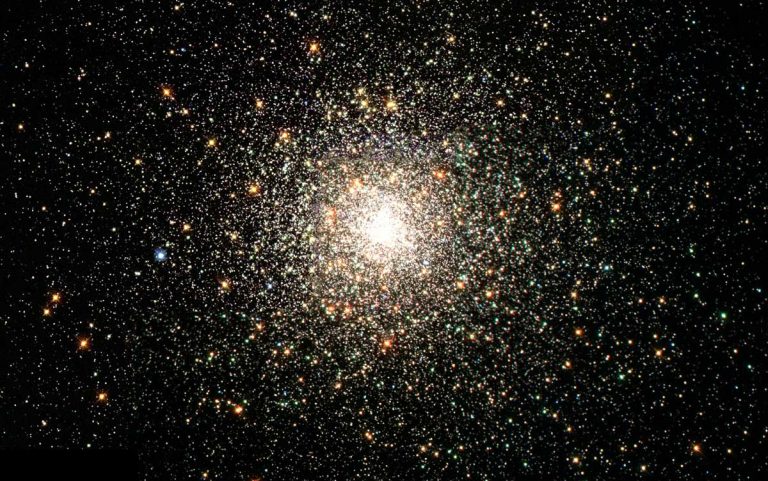What is space porn? Probably not what you had in mind

What is space porn?
You know us, we love a bit of sex tech. From sex simulator games to the newest sex toys for queer couples, we’re somewhat renowned for our coverage of the upcoming wonders of the world of sex tech—and I personally couldn’t be any prouder of it. Having this in mind often leads me to research any other internet trend linked to sexual pleasure, and a few days ago, I honestly thought I had stumbled upon a new one to add to my list: space porn.
But for those already fantasising about some elaborate porn niche where actors—or cartoon characters, who knows?—get it on in an intergalactic scenery, let me stop you before you get too disappointed. Space porn (or SpacePorn) is actually a subreddit dedicated to beautiful space images, unlike your first (and mine, too) theory.
With interplanetary travel just around the corner and the discovery of planets that are more habitable than Earth, it shouldn’t come as a surprise that interest in space is skyrocketing. After all, space influencers are already a thing.
Space influencers
According to Klear’s recent findings on the appearance of space influencers on social media platforms, the space community is made up of 50 per cent of women, mostly from the US (22.4 per cent) and the UK. These cosmic influencers like to share content not only on websites like space.com and planetary.org but also on Instagram, Facebook, and Twitter.
Astronaut trainee and future Mars-walker Alyssa Carson has more than 347,000 followers on Instagram, and German astronaut, geophysicist, volcanologist, and explorer Alexander Gerst is just behind her with 314,000 followers.
Both these trends suggest that there is a strong demand for space content dosed out in bite-sized clips and pictures, as opposed to long-form text.
SpacePorn and other subreddits
The subreddit accepts any space-related content for its members’ pleasure, “As long as the focus of the image is related to space in some way, it is allowed. This includes photographs, composites, photoshops, simulation renders, artist’s depictions, and artwork.”
This type of subreddit or website in general has previously been used for a wide range of topics. Among the most common one is food porn and the many websites dedicated to it, from Tumblr pages to foodporn.com
What food porn does to your brain
Many animals are known to prefer prettier, flashier, more attention-grabbing versions of their natural environments, which is called the ‘supernormal stimulus’, and it certainly seems like humans are part of this category.
In other words, exaggerated imitation can cause a stronger pull than the real thing in many cases, and when it comes to humans, we’re actually able to produce our own supernormal stimulus, which makes us even more ‘addicted’ to some of them. Pornography is a supernormal stimulus, and so is candy, which simply is a sweeter alternative to fruits. Still not clear enough? Let me rephrase: people tend to really like sex, and the same thing can be said about sweet food. Naturally, we already had sexual intercourse and fruits to satisfy our needs, but we went further by introducing porn and candy or our own pleasure.
Now guess which supernormal stimulus is the strongest of them all. Yes, food porn is the one. Defined in part by the senses that it is a visual experience of something that other people can smell and taste, food porn is something that, at its best, should manufacture a desire that it can’t satisfy.
According to The Atlantic, the first documented use of the term ‘food porn’ comes from the feminist writer Rosalind Cowards’ 1984 book Female Desire. It was referenced every so often for the next two decades or so by food writers and chefs, according to the site Know Your Meme, but didn’t take on its current meaning—food photos shared through social media—until the early 2000s. The photo-sharing website Flickr even launched its own Food Porn category in September 2004.
A few months later in April 2005, the term entered the Urban Dictionary under the definition: “Close-up images of juicy, delicious food in advertisements. Used in a sentence: ‘Oh, that McDonald’s ad was like food porn. I want a Big Mac sooo bad.’”
It is no secret that people first eat with their eyes—a fact backed by science. A 2012 study published in the journal Physiology and Behavior found that seemingly minute details about a dish’s appearance, like “gloss, evenness, and shape,” can alter how diners perceive its taste and smell. So what happens when eating with the eyes is the only step, rather than just the first? Like Space Porn is, for example.
While some scientists believe that images of food only trigger the desire for the real thing, other research has shown that when it comes to appetite, food porn may be a substitute for food itself. A study conducted in 2011 found that looking at pictures of food may turn people off from the real thing—but only if the food in the image has a similar flavour to whatever real item is about to be consumed.
When participants viewed photos of salty snacks for example, and then ate salted peanuts, they tended to enjoy the nuts less than people who had viewed photos of desserts. While both studies seem to prove completely opposite points, one thing is for certain, food porn as well as other forms of ‘porn’ hit something really primal in humans. The real question is: can the same be said about space porn?





